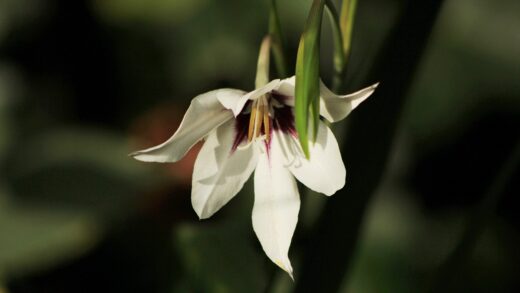The process of overwintering is a crucial and fascinating phase in the life cycle of fall-planted garlic, particularly for hardneck varieties grown in colder climates. It is a period of dormancy and resilience, where the planted clove endures freezing temperatures, snow, and ice, only to emerge with vigor in the spring. Successfully guiding a garlic crop through the winter requires a combination of proper planting techniques, protective measures, and an understanding of the plant’s physiological needs. This careful management ensures not only the survival of the cloves but also provides the necessary cold exposure, or vernalization, that many varieties require to form large, well-divided bulbs the following summer.
The journey of overwintering begins with timely planting in the autumn. The goal is to plant the cloves early enough to allow them to develop a substantial root system before the ground freezes solid, but not so early that they produce a large amount of tender top growth that could be damaged by harsh winter weather. Typically, planting four to six weeks before the first hard freeze provides the ideal window. This established root system anchors the clove in the soil, preventing it from being heaved out by frost, and provides the foundation for rapid growth once conditions are favorable in the spring.
Soil conditions play a pivotal role in the success of overwintering. The soil must be exceptionally well-draining, as the greatest threat to garlic during the winter is not the cold itself, but the combination of cold and wetness. Waterlogged, frozen soil can suffocate the roots and cause the clove to rot. Creating raised beds is an excellent strategy in areas with heavy clay soil or high winter precipitation, as it ensures that excess moisture drains away from the root zone, keeping the dormant cloves safe from decay.
Once planted, the most important step in preparing garlic for the winter is the application of a thick layer of protective mulch. This mulch acts as a blanket, insulating the soil and the cloves within it from the most extreme fluctuations in temperature. It helps to prevent premature sprouting during brief winter warm spells and protects the shallow roots from repeated freezing and thawing cycles that can damage the plant. This insulating layer is critical for ensuring the garlic remains dormant and protected until the true arrival of spring.
The role of vernalization
Vernalization is a physiological process in which certain plants, including many varieties of garlic, require exposure to a prolonged period of cold temperatures to initiate the next stage of their development. For garlic, this cold treatment is the critical trigger that signals the plant to switch from a single, undifferentiated clove into a fully divided bulb with multiple cloves. Without this necessary cold exposure, a hardneck garlic clove might simply grow into a large, round, undifferentiated bulb, much like a pearl onion, rather than the familiar segmented bulb.
The specific temperature and duration requirements for vernalization can vary between different garlic cultivars, but generally, a period of several weeks at temperatures between 0 and 10 degrees Celsius is effective. The natural winter period in temperate climates provides this chilling requirement perfectly for fall-planted garlic. This is a primary reason why planting in the autumn is the standard practice for hardneck varieties and in many regions for softneck varieties as well. It allows the plant to naturally undergo this essential developmental process.
This requirement for vernalization explains why hardneck garlic typically does not perform well when planted in the spring in cold climates or when grown in tropical or subtropical regions that lack a distinct cold season. A spring-planted clove in a northern climate will not have sufficient time in cold soil to satisfy its vernalization needs, leading to poor bulb formation. Similarly, growers in very warm climates must choose specific softneck varieties that have a very low or no chilling requirement to be successful.
Understanding vernalization allows growers to make informed decisions about variety selection and planting time. It underscores the importance of aligning the plant’s genetic needs with the local climate. By planting in the fall, we are not just giving the garlic a head start; we are cooperating with its innate biological clock, providing the environmental cues it needs to complete its life cycle successfully and produce the high-quality, cloved bulbs that are desired.
Mulching for winter protection
Applying a thick layer of mulch is arguably the most critical step in ensuring garlic successfully overwinters, especially in regions with severe cold. The primary function of this mulch layer is not to keep the ground warm, but rather to keep it consistently cold and frozen. It acts as an insulator, shielding the soil from the temperature swings common in winter, such as sunny days that can thaw the surface followed by frigid nights that refreeze it. This stabilization prevents the repeated freezing and thawing cycles that can heave the cloves out of the ground and damage the delicate, newly formed roots.
The ideal materials for winter mulch are light, airy, and do not compact heavily when wet. Clean straw is a classic and excellent choice, as it provides fantastic insulation while still allowing for some air and moisture exchange. Shredded leaves are another superb option and have the added benefit of decomposing into valuable leaf mold by the following season. Other suitable materials include grass clippings (applied in thin layers to avoid matting), pine needles, or even spoiled hay. The key is to choose a material that will create a protective blanket without becoming a dense, waterlogged mat.
The mulch should be applied immediately after planting and watering, to a depth of at least four to six inches. This may seem like a very thick layer, but it will naturally settle and compact somewhat over the winter. This generous layer provides the necessary insulation to protect the cloves from the coldest temperatures and biting winds. In the spring, the emerging garlic shoots are strong and pointed, and they will have no trouble pushing their way up through this layer of mulch.
Beyond insulation, the winter mulch provides several other significant benefits that extend into the growing season. It is a highly effective method of weed suppression, preventing winter and early spring weeds from germinating and competing with the young garlic plants. As the mulch slowly decomposes, it adds valuable organic matter and nutrients to the soil, improving its fertility and structure over time. Furthermore, it helps to conserve soil moisture in the spring and summer, reducing the need for supplemental irrigation.
Managing winter growth and frost heaving
In many climates, it is perfectly normal for garlic to sprout and produce a few inches of green top growth in the autumn before winter sets in. This is a sign that the clove has established a healthy root system and is not usually a cause for concern. This early growth is quite cold-hardy and can typically withstand winter temperatures without significant damage, especially when protected by a thick layer of mulch and a blanket of snow. There is no need to take any action; simply allow the plant to follow its natural course.
However, if an unusually warm and extended autumn causes the garlic to produce excessive top growth (more than six to eight inches), it can become more vulnerable to damage from winter winds and cold. While there is not much that can be done to reverse this growth, ensuring a thick mulch layer is applied right up around the stems can help to protect the base of the plant and the bulb below. Even if the leafy tops die back during the coldest part of winter, the clove and roots will remain viable and will send up new growth in the spring.
Frost heaving is a significant risk for overwintering garlic, particularly in clay soils that hold a lot of water. It occurs when the water in the soil freezes and expands, pushing the soil and anything in it—including garlic cloves—upwards. When the soil thaws, it contracts, leaving the clove partially or fully exposed on the surface where it is vulnerable to desiccation and extreme cold. Proper planting depth (two to three inches) and a thick layer of mulch are the best defenses against frost heaving.
If you do notice that some cloves have been heaved out of the ground during a winter thaw, it is important to take corrective action. Gently push the clove back down into the soil to the appropriate depth, being careful not to damage any roots that may be attached. If the ground is too frozen to replant it properly, you can cover the exposed clove with extra mulch or a small mound of soil until the ground thaws enough to replant it correctly. Regularly checking the garlic patch during the winter, especially during thaw periods, can help you catch and remedy this problem quickly.
















